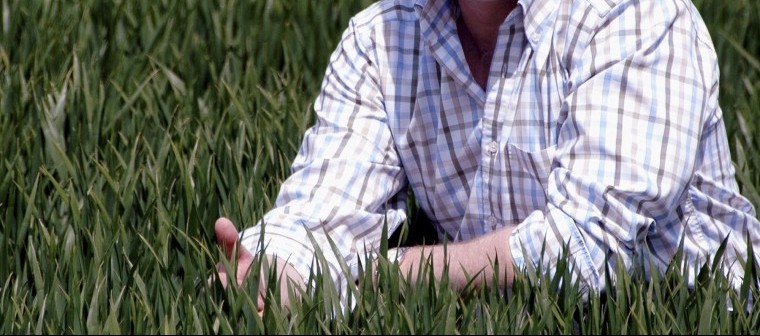As scientists report that the unseasonably hot weather that has seen the UK bask in the hottest summer for 40 years could last until 2022, one wheat breeder is urging growers to consult results from this year’s variety trials before switching varieties.
New research, published in the journal Nature Communications, suggests 2019 may be even hotter than 2018 and that over the next few years our climate will be “warmer than normal” as we begin an anomalously warm phase.
While the impact of this summer’s heatwave is yet to be fully understood reports so far suggest wheat yields are highly variable with some varieties more affected than others. Yet, despite its impact, Andrew Newby, KWS UK managing director, is urging growers not to dismiss it as an anomaly.
“This year’s trials results are just as valid as those from any other [year],” he says.
“The variety assessment process is rigorous for a reason: to assess performance across a range of situations and conditions. The weather is the greatest influence on any variety and growers need varieties able to cope with whatever Mother Nature delivers,” he adds.
Provisional results from this year’s AHDB variety trials suggest this season is proving to be a tough test. If these results are maintained, says Mr Newby, those planning a variety change should think carefully.
“The indications are that several new varieties, often promoted on limited data, are proving to be anything but consistent. In contrast, some of the more established varieties are quietly delivering outstanding yields,” he says.
The reasons for this performance owe much to their breeding heritage, says Mr Newby. A factor he believes will become increasingly important should we see our long-term climate move closer to that seen this season.
“It should not come as a surprise that in a dry year, those varieties bred in the driest part of the country tend to do the best. Plant breeding is a long-term game, breeding varieties with such resilience cannot be done overnight,” he says.
AHDB Provisional winter wheat yield results
Across seven sites spanning East Anglia, the Midlands, East Yorkshire and the Scottish Borders, the results make for interesting reading.
Bread-makers
Within the Group 1 category, KWS Zyatt remains the highest-yielding variety in the group while candidate variety and potential bread-maker KWS Extase shares top-slot with KWS Siskin in Group 2.
“A hallmark of Zyatt and Siskin has been their above-average yield performance each year they’ve been in trials and we see this again in 2018. Couple this performance with their end-market appeal and they make a compelling proposition for every farm. KWS Extase is proving highly impressive in all trials and we expect it to be immensely popular with growers in the autumn of 2019,” says Mr Newby.
Biscuit wheats
The resurgence of the Group 3 sector looks set to continue with the positive performance of candidate varieties KWS Firefly and LG Rhythm both of which yielded significantly above the average of controls. Meanwhile, the established varieties, KWS Barrel and KWS Basset record admirable yield performances.
“The performance of Barrel and Basset this season will surprise many, but they have rewarded growers again with their above-average yields proving they are here for the long-term. In KWS Firefly we have another exciting candidate for next season and one which will continue to support the UK’s reputation for quality biscuit wheat,” says Mr Newby.
Feed wheats
The feed wheats of the Group 4 category perhaps best reflect some of the variability growers may be experiencing on farm with KWS Crispin and KWS Kerrin both out-performing their three-yean means at 105% of controls to top this year’s trials.
“Both Crispin and Kerrin have delivered exceptional performances this season. Kerrin in particular has produced consistently high yields across all trial sites proving it has the resilience to take whatever the season brings. Interest this season indicates it will again prove popular among those looking for a high-yielding feed,” says Mr Newby.




